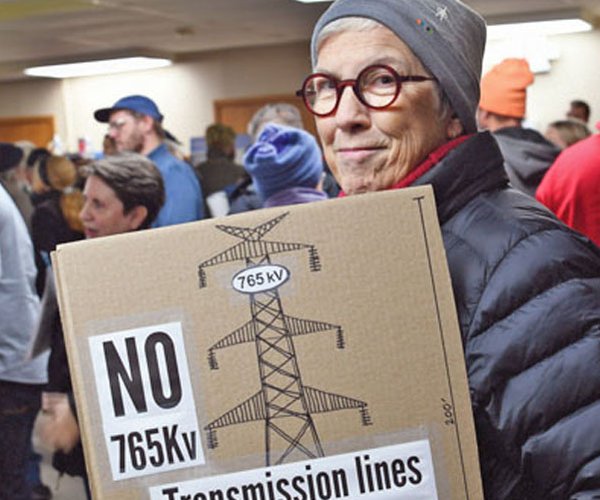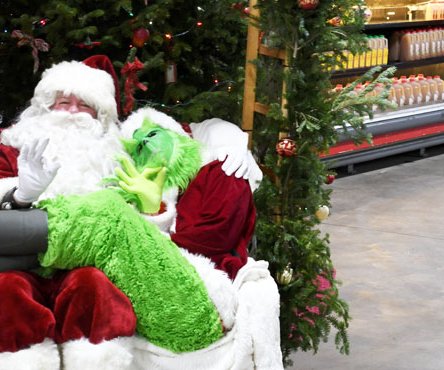Johnson Public Library Activities
DARLINGTON – The Johnson Public Library has many events for the public to enjoy. The events for April are: April 6-Passport to Reading Book Club 3:30 p.m., for 1st & 2nd graders (Texas); April 7-Story Hour 10 a.m., Phyllis Sonsalla will read a Japanese story & show her kimonos!; April 7-Pages & Popcorn Book Club 1:30 p.m., for 6th-8th graders (Community Read & Sewing!); April 10-National Library Week begins! Drawings every day! Story ‘n’ Craft Hour 10 a.m. (Bunnies); April14-Story Hour 10 a.m. (Nursery Rhymes).
HCE Spring Fling
DARLINGTON – The Lafayette County Home and Community Education, or HCE, will be holding their Spring Fling on Thursday, April 6 at the Immanuel UCC Church at 339 East Louisa St., in Darlington. The theme will be a “Hat Parade”. Hats of all kinds, shapes and sizes. Wear a hat if you can, and if it is something special, please call Christa Jenson at 776-4669 and tell her about it. We will also be holding our annual Cultural Arts Contest. All information is in our Gold Sheet or call Lisa at the Extension Office at 776-4820. Registration will be at 6 p.m. and Salad Supper at 6:30 p.m. Cost is only $6. Everyone is always welcome.
Darlington Food Pantry
DARLINGTON – The monthly second harvest mobile food pantry will be held Friday, April 7th, 2017 from 4 to 5 p.m. The pantry is held in the lower level of Town Bank. There are no income requirements or eligibility limits for those wising to participate. Volunteers are needed from 3 pm to help unload the truck until 6 pm for clean up. Volunteers can help with all or any part of the pantry. To volunteer you can contact Carrie at 608-293-0791 or simply come to the pantry to register as a volunteer the day of the pantry.
Musical Cabaret
DARLINGTON – The Darlington High School Music Department will be holding its annual Musical Cabaret on Saturday, April 8th, at the DHS auditorium. The doors open at 6:30 p.m. with the performances starting at 7:00 p.m. General admission tickets are $5.00 and can only be purchased at the door that night.
Palm Sunday performance
DARLINGTON – Darlington’s Immanuel United Church of Christ will be performing “It’s Happening Today” on Palm Sunday April 9th at 10:00 a.m. The performance will involve members of the congregation, youth Sunday School, and Confirmation class. Join us in experiencing the events leading up to Palm Sunday.
International Migratory Bird Day
DARLINGTON – International Migratory Bird Day is on April 9 and the Lafayette County Bluebird Society has invited Dr. Stanley Temple to speak on how effective the 100 year old Migratory Bird Act is in his presentation titled “Making the Migratory Bird Treaty Work, Then and Now: a Centennial Assessment”. The program will be from 1-4 p.m. in the community room at Town Bank in Darlington. A silent auction and refreshments will be included in the day. More information can be found at www.lafayettecountybluebirdsociety.wordpress.com or by emailing lafayettecountybluebirdsociety@yahoo.com.
Lunch Bunch Meets
DARLINGTON – The topic of discussion at the Monday, April 10, 2017 meeting of Lunch Bunch will be, “Health from Within.” The gathering will take place in the County Board Room of the Lafayette County Courthouse from noon to 1:00 p.m. Feel free to bring your lunch during this informal hour. Dr. Abbey Tebbe, Health from Within, will be the presenter for the session. The items discussed will be: the Immune System, Nutrition and Self-Care Measures. The public is welcome to attend the informal, free session sponsored in part by Lafayette County Home and Community Education (HCE), UW-Extension, and free- will donations.
Women’s Guild of Immanuel Church
DARLINGTON – The Women’s Guild of Immanuel Church will be meeting on Thursday, April 13 at noon for a light lunch. The forensics class will be our speakers. Hostesses are Janette Steger, Chair; June Hancock, co-chair; Virginia Douglas, LeeAnn Ruef, Deana Soper, Marjean Sutherland, and Nathalie Ruf. Everyone is invited.
Sons of Norway movie night
MONROE – Thinking of someone who would like to know more about the Sons of Norway? Think of someone who would like to meet once a month? Come to the April 13 Movie Night/Social at 6:30 p.m. FINDING THEA is the story of Thea Foss, a 19th century Norwegian immigrant to the Pacific Northwest who became the inspiration for the fictional heroine Tugboat Annie and created one of the Pacific’s largest tugboat companies. It is a classic American immigrant story. It will be located at Crossroads Community Church, 222 Old Argyle Road (used to be Baker’s) Monroe. Enter the house entrance not the church entrance.
Community Blood Drives
LAFAYETTE COUNTY – The Mississippi Valley Regional Blood Center encourages eligible donors to resolve to give blood regularly. Donors with all blood types are needed, especially those with types AB, O, B negative and A negative. For questions about eligibility, please call the Mississippi Valley Regional Blood Center at (800) 747-5401. Blood donation is a safe, simple procedure that takes about 45 minutes to one hour. Individuals with diabetes or controlled high blood pressure may be accepted as eligible donors. The MVRBC is the exclusive provider to Memorial Hospital of Lafayette County.
Gratiot – Friday, April 14 - 2:30p.m. - 5:00p.m., Gratiot State Bank
The Living Last Supper
ARGYLE – The men of Cornerstone Lutheran Church of Argyle will present The Living Last Supper at 7:30 p.m. on April 14 and April 15 at Cornerstone Lutheran Church. It is a re-enactment of Leonardo Da Vinci’s famous last supper painting. A tribute to the disciples of Jesus that paid for their faith with their lives. A wonderful and uplifting Easter presentation. No Charge. Free will offering that will go to Jovi Mau Family to help with medical expenses. Refreshments served after the performance. Join us for fellowship. All are welcome.
Bunny Hop
DARLINGTON – The 2017 Bunny Hop 5K Run/Walk & 1M Run/Walk organized by the Dora Ritter Wellness Center will be April 15 from 8:30 a.m. until 11:30 a.m. starting at the Darlington Municipal Building Gymnasium. This year proceeds will go to the Dora Ritter Wellness Center and Adler Roelli, the son of John and Rhonda Roelli.
Shullsburg’s Easter Egg Hunt
SHULLSBURG – Shullsburg’s Miner Community Group is hosting the annual FREE Easter Egg Hunt on Saturday, April 15 beginning at 10 a.m. at beautiful Badger Park for one last time. The “egg lady” has flown the coop and the bunny is getting old and gray so unless a few fresh faces offer to take over, this will be the big finale.
Youngsters 4th grade and under, accompanied by an adult, are invited to bring their baskets or bags to collect the plastic eggs and turn them in for treats and prizes. Non-perishable items will be collected for the food pantry. In case of rain, the hunt will be re-located to the Centenary United Methodist Church.
Royce Lyne Memorial Alumni Basketball Tournament
SHULLSBURG – The Royce Lyne Memorial Alumni Basketball Tournament will Saturday, April 15 at the Shullsburg High School with the first game starting at 8 a.m. The Basketball Tournament includes plenty of basketball but new this year is volleyball! There will be an excellent silent auction, delicious bake sale and tasty concessions. The public is welcome.
Bluebird Nest Nature Center program
DARLINGTON – Dr. Rebecca Christoffel will be presenting a program at the Bluebird Nest Nature Center, 308 Main Street in Darlington, on Wednesday, April 19, at 7:00 p.m. on turtles that are native to Wisconsin. There is no admission to any programs at the nature center.
Darlington Garden Club
DARLINGTON – The Darlington Garden Club will meet on Thursday, April 20, 2017 at 7:00 p.m. in the Community Room of Town Bank in Darlington. Mary Lindell is the hostess. For the program, Judy Swanson has arranged for our speaker to be Mary Collier who is a soil conservationist with the Natural Resources Conservation Service. Ms. Collier will discuss EQIP, the Environmental Quality Incentives Program and beneficial conservation practices that can help gardeners improve soil. The public is welcome to attend.
Lafayette County Upcoming Events - 04/06/17





